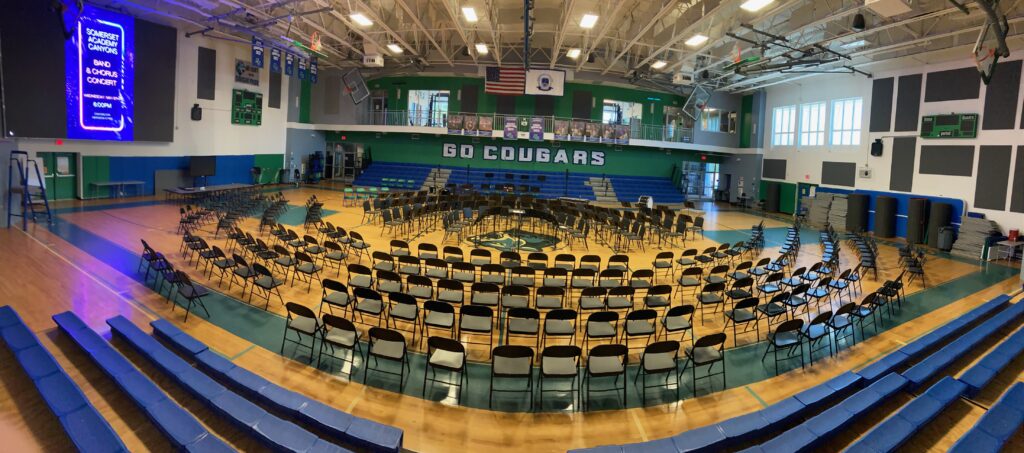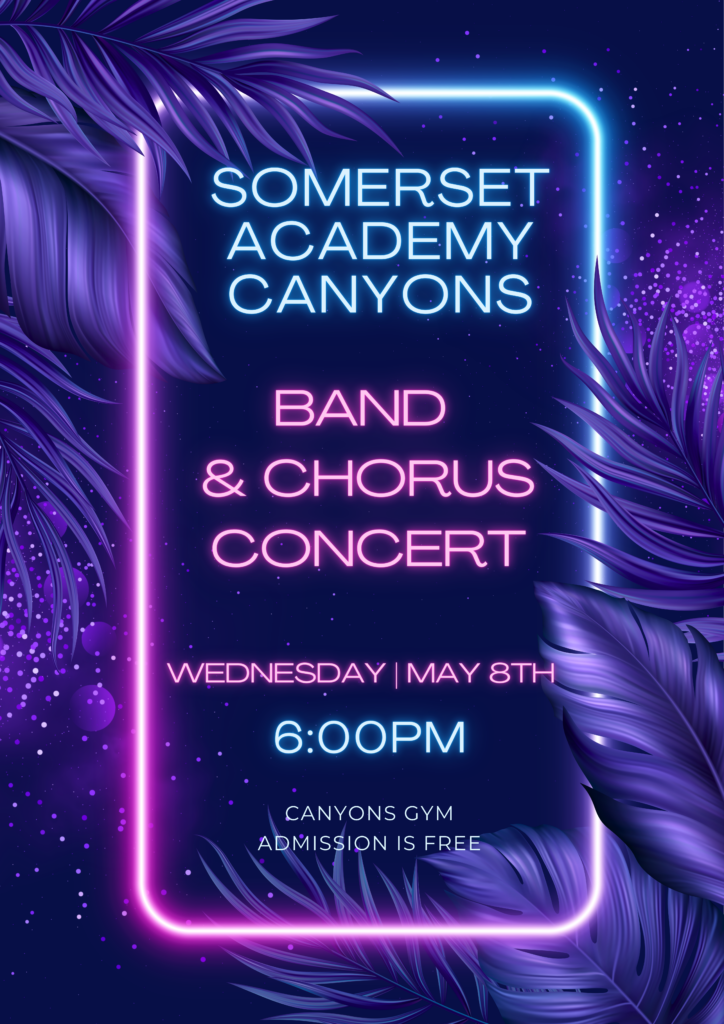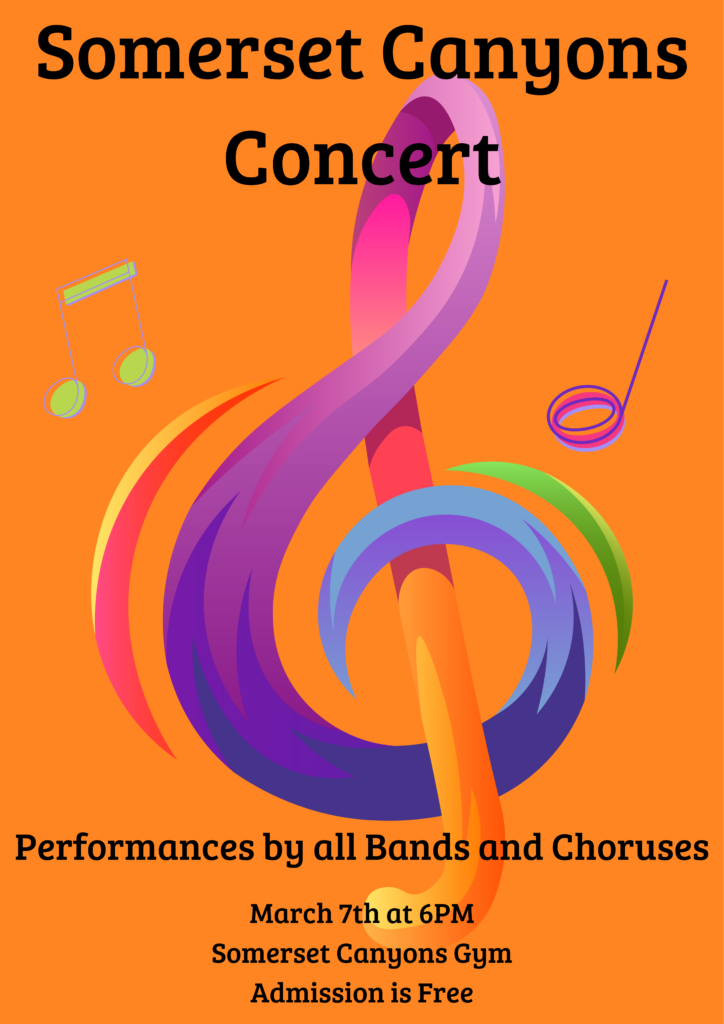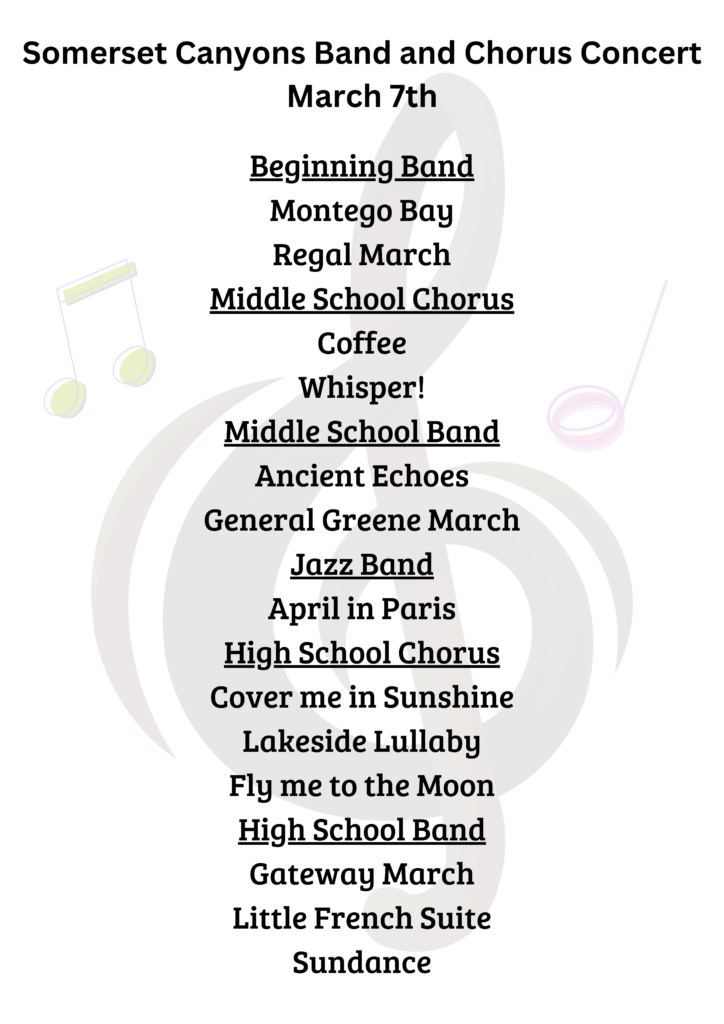
Planning a concert is something that every band and chorus teacher has to do. For the most part, your university education doesn’t prepare you for what needs to be done. What follows is my approach to concerts that I have developed over the last 30+ years.
When and where
You want to do a concert, but where will this concert be held? Does your school have a place for you to perform, or will you need to find a venue off campus? And, once you know the location of the performance, when will you perform?
Obviously, everyone wants to have a stage and auditorium to use for a performance, but if you are determined and creative, you can perform anywhere. Several years ago I gave a concert outside on a basketball court. This was obviously less than ideal, but it was received positively. We performed a half hour after the end of the school day. Our audience stood and we kept things brief.
Once you’ve determined the location of the concert, you’ll need to book the venue. If it is at your school, be sure you have included the administration AND the athletic director in your correspondence. You want everyone to know that you are performing. Don’t expect the athletic director to cancel all of their events. You just want to be certain that they are aware of what is going on.
Music
You might think that music should be planned before you think about performance site and date, but the venue and especially the time of year will influence your music choices.
I schedule three concerts per year. Each concert has a different musical focus. The December concert is holiday music. The concert in March focuses on upper level repertoire and the May concert has some fun music.
If I had a concert in November or July, I would have some patriotic music to correspond with Veteran’s Day. A concert in February would have romantic music. Spooky music fits well with an October performance. Hopefully you see what I’m trying to say.
Our final concert of the year usually has a combined band piece. I like ending the year with a large ensemble performance. This means I have to comb through music looking for something appropriate for all of the groups involved.
Advertise
Now it is time to let people know about your upcoming show. You’ll need an image with all of the relevant information. Make something that catches a person’s eye and will look great on social media.
If you haven’t done this before and you are feeling like this is out of your league, don’t worry. We’re in the 21st century, you don’t need to be a graphic designer. Go to Canva and type in “school band concert”. The images that appear are easily edited and tailored to your needs. Here is an image I used in Canva this year:

Take the image and send it to whoever is doing social media at your school.
Remember your parents and students. Send them this image along with an announcement of when and where the concert will occur. Encourage your band and chorus family to post the image online so that their friends and family can plan to be in attendance.
Lastly, you have to remember your school family. Does your school have daily announcements? This image should be shared along with a brief write up. I will also invite the entire faculty and staff of the school via email.
Get creative here, maybe you want to make a short recording of some music you will perform which you can share. Or, maybe you have a specific theme that you think will be of interest.
You and the kids deserve to have an audience at the show!!
Administration
You want your administrators to be at the concert. No, that’s not true. You NEED to have your administrators at the concert. They don’t know what you are doing in the chorus and band room. Here are some suggestions to help you to get them there.
Be direct and specific. Look your administrators in the eyes and specifically ask them to be at the show. And, give them a role to fill. I like to ask my head administrator to open the program.
Look around, if you see an administrator at the show, approach them before the program begins and tell them, “Thank you for coming”. Contact them after the performance and thank them for being there. Tell them how much it means to you and to the kids.
Once an administrator sees all of these happy parents enjoying a performance, they’ll want come back for the next show. In essence, they’re hooked. They spend a great deal of their day dealing with negative issues. Give them something positive to look forward to…. YOUR PERFORMANCE!
You’re not done yet
At this point you think you’re done. Everyone is invited. You’ve got your music picked out. You know when and where you’re going to perform. Other than the obvious need to prepare the music, what else could there be?
You need to think through your concert order and flow. The modern audience demands that things move quickly and efficiently. No one wants to sit there while you transition your groups. Can you find a different way to do things?
This idea could be a whole post for me. I think we expect our audience to behave like they paid $100 a ticket for an orchestra concert. But, the truth is, these folks have been at work all day. They’re tired and they have dragged themselves to the program. Some of them are here against their will and they’re hoping the show will be short.
Here are my suggestions to improve concert flow.
Stop talking
Keep the talking to a minimum. I often do no speaking whatsoever until the next to last song. At that point, I tell them that I wanted the music to speak for itself. Then I’ll thank them for coming, turn around and conduct the final piece.
I know that this upsets some directors. They want to talk about what the piece is about so that they can educate their audience. If that’s what you want, go ahead and do it, but I’m telling you that it is boring for a Dad who would rather be at a sports event. I think you are shooting yourself in the foot.
Other directors choose to have students read things to the audience. They want the students to gain experience with public speaking. Again, that’s fine. But, you are giving a reason for busy Mom’s and Dad’s to not come back for your next show. They didn’t really enjoy hearing your band kid try to pronounce, “McGinty”. If you are going to use student speakers, work meticulously with them. They should be practicing their speeches as hard or harder than their instruments.
Stop tuning
Heresy! How can I possibly suggest that we not tune our bands!!
I’m not saying you shouldn’t tune your band. I’m telling you to keep your concert moving. Don’t stop the show because your clarinets are out of tune. No one really cares. Are you shocked by this statement?
Your audience can not tell the difference between a Superior performance and a Good performance. You are not performing for a rating. Leonard Bernstein is not in the audience. They want to hear the music their kid has prepared, not concert F/Bb or whatever note you want to tune.
This is tough on our band director egos, I know.
Stop moving around
Keep your transitions to one per show. We don’t want to keep waiting for your group to reposition itself.
“But, if I reposition my trombones and french horns for this piece it sounds better!” Yeah, well the audience is bored and wondering how long this reseating will take. And, they can’t hear the difference.
I decided to put our three bands into one big arc for our final concert and it worked out well. (See the above image.). NO major transitions of bands were needed. Each band was a wedge in the overall setup. The jazz band played from the bottom rows of the bleachers and the chorus stood at the top of the bleachers. We did need to move students in and out of the jazz band as well as switch our choruses. But these things were done in less than a minute.
Programs
Since you won’t be talking, your audience will need a program. You can deliver this program to them in a few ways.
A paper program is still highly effective at a concert. I don’t use expensive paper. The cost of the paper isn’t worth it in my opinion. Especially since very few parents keep the program after the performance.
You could choose to go paperless and give your parents a QR image to scan with their phones. There are many sites that allow you to generate a code. The up side of doing a program is that you can give parents links to all of the things you might want to talk about.
For me, I tried moving to a paperless program but I found that the parents weren’t scanning the code. So, I went back to paper.
If you are using Canva, you can get some cool effects for your program. Here is our program art work and program from our March concert.


I printed the program using a black and white printer. Canva allowed me to modify the first image so that I could create a watermark for the program. I like the idea of having continuity in the branding of a concert. Sometimes it isn’t possible, but I try.
You
Make sure you have organized yourself for the show. Get your music in order. Write out what you want to say and practice saying it. Be certain that it is clear and concise.
Hydrate. I once had the spins during a concert and realized I hadn’t had a drink of water for a few hours! Not good.
Eat and rest before the show. I’ll eat a banana, drink a Pom and have a Cliff bar or two. No sodas and nothing heavy that is hard to digest. You can party afterwards.
Get help
I’m terrible at this. But, you need help to pull of a great show.
Try to get someone to work lights and sound. Find someone to help supervise young students. Get non-band/chorus students to hand out programs at the door. Do you have an intermission? You might want someone to provide refreshments. (Fundraiser!) Do you want to charge admission? You’ll need someone selling tickets and others helping people to find their seats. Are you decorating the hall? Who is setting everything up and tearing everything down?
Feeling overwhelmed yet? Start small. Build a team. Great concerts are worth your time.

One response to “Planning a Concert”
[…] Holly Jolly Holiday Concert. Another holiday concert is in the books. If you want some insight into my concert planning process, I blogged about it here. […]